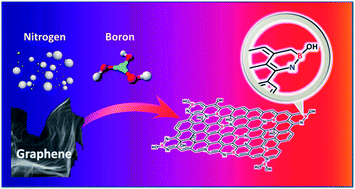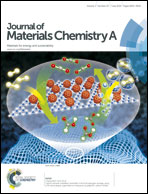Importance of open, heteroatom-decorated edges in chemically doped-graphene for supercapacitor applications†
Abstract
Chemically doped graphene has been actively investigated as an electrode material for achieving high-performance electrochemical systems. However, the stability of pure-carbon-rich edges and/or heteroatom-decorated edges, and their effect on the electrochemical performance remain largely unexplored. We found that in a high temperature thermal doping process, the functionalized graphene edges were structurally stable at 1200 °C, whereas the edges at 1500 °C were unstable and coalesced into loops through covalent bond formation between adjacent graphene edges. Interestingly, boron and nitrogen co-doped graphene prepared at 1200 °C showed the largest capacitance in both acidic and alkaline media due to the presence of the BNO moieties along the edge sites. The doped material also showed the best rate capability due to the largely enhanced electrical conductivity originating from the substitutionally doped boron and nitrogen atoms. Our findings regarding the stability of heteroatom-decorated edges without loop formation can now be utilized as a guideline for maximizing the electrochemical activity of graphene in various electrochemical systems.


 Please wait while we load your content...
Please wait while we load your content...